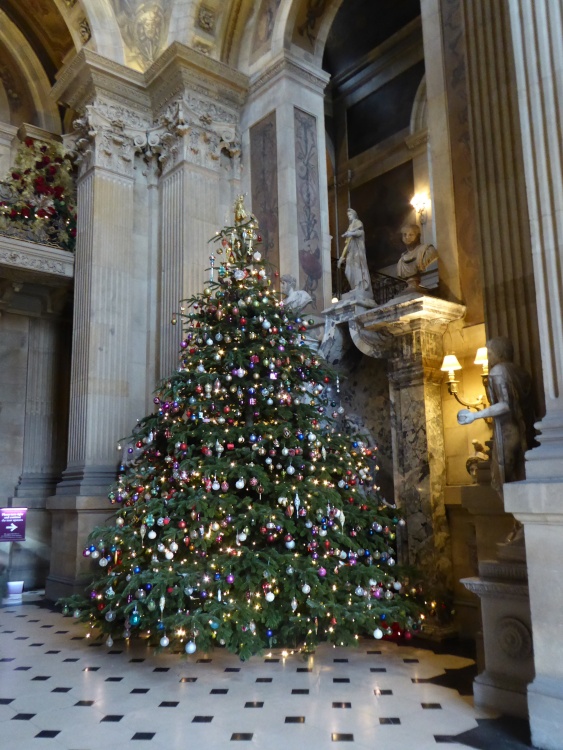
Christmas at Castle Howard - Image by PicturesOfEngland.com member Marita Mersch (view gallery)
Evidence of midwinter celebrations in England dates back to pre-Christian times during the Neolithic period when the 'midwinter solstice' was a highly important time of year to the people who built and used Stonehenge. It is during the midwinter solstice that the tallest stone lined up with sunrise on December 21st, the shortest day of the year, signifying the coming of longer and warmer days. Evidence found at nearby Durrington Walls suggests that the people of this period held huge feasts around this time of year, possibly gathering at Stonehenge for ceremonies and celebration.
With the coming of the Romans to Britain, other midwinter customs were brought with them as the Romans celebrated a midwinter festival of their own, called Saturnalia, honouring Saturn, chief of the Roman gods. This festival began on the 17th December and lasted 5 days, during which time slaves were served by their masters, gambling was allowed, and small gifts were exchanged.
During the Anglo-Saxon period, their midwinter festival was named Yule (Yuletide, Yulefest), and Yule logs were burned, with feasting and celebrations continuing until the logs had burned out. Boar were hunted and eaten, and during Yule, houses were decorated with evergreen leaves such as holly and ivy and also mistletoe, which was seen as a symbol of immortality, as it grew even through the winter months and so it was hung above doorways and on windows to ward off evil spirits and disease.
Eventually as the Saxons were converted to Christianity, Christmas (or Christ’s Mass) became the main midwinter festival, carrying over with it many of the old customs and traditions of the old pagan festivals that preceded it, such as the holly and mistletoe, the exchanging of gifts, the Yule log, and huge feasts of celebration.
Through medieval times, and then the Tudor times, the Christmas festival gained popularity but it wasn't until the Victorian times that the Christmas we know of today really took off in Britain, with the addition of the Christmas tree, Christmas cards, Christmas crackers, and many of the Christmas carols we sing today all being introduced during the Victorian period.
Here are a few additional Christmas facts you can use to show off with around the Christmas dinner table.
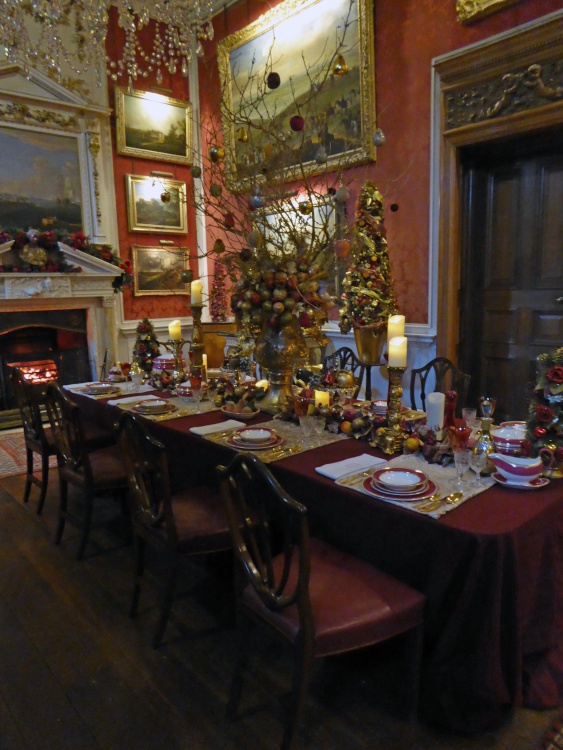
Christmastime at Castle Howard - Image by PicturesOfEngland.com member Marita Mersch (view gallery)
Boar was the main course at the Christmas dinner table during medieval England, with turkey not appearing until the 16th century, when it is believed King Henry VIII was the first English monarch to have turkey for Christmas. During the 17th century the tradition for turkey at Christmas spread, as did eating goose which was the more popular of the two until the Victorian era saw turkey become the bird of choice.
ID#172
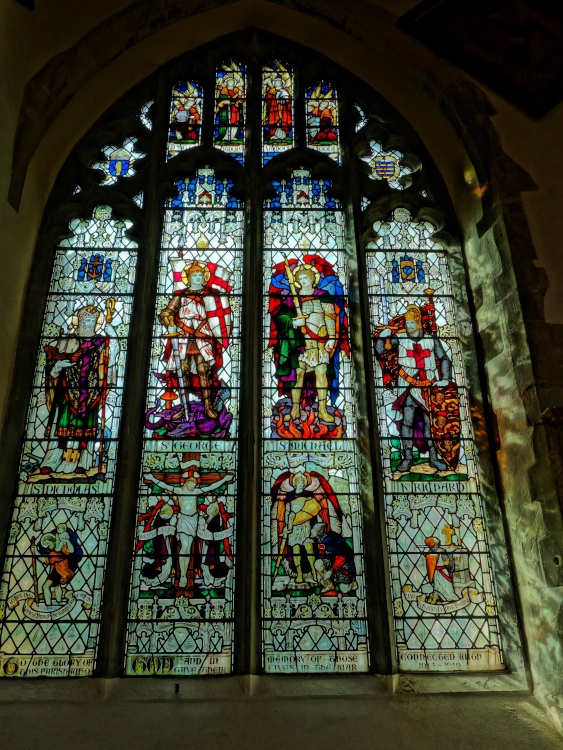
St Thomas's Church Memorial Window - Image by PicturesOfEngland.com member Victor Naumenko (view gallery)
The ingredients for mince pies can be traced to European crusaders returning from the Holy Land during the 13th century, bringing with them Middle Eastern recipes that often contained meats, fruits, and spices, and thus it was deemed appropriate to celebrate Christ's birthday with ingredients from his home land. The pie was originally much larger than it is today and was shaped as a manger or cradle, and 3 spices were often used to represent the three gifts from the three Magi (the three wise men, or three kings) such as cinnamon, cloves, and nutmeg. Modern day mince pies still retain much of the same recipe, though are much smaller and round in shape.
ID#30377
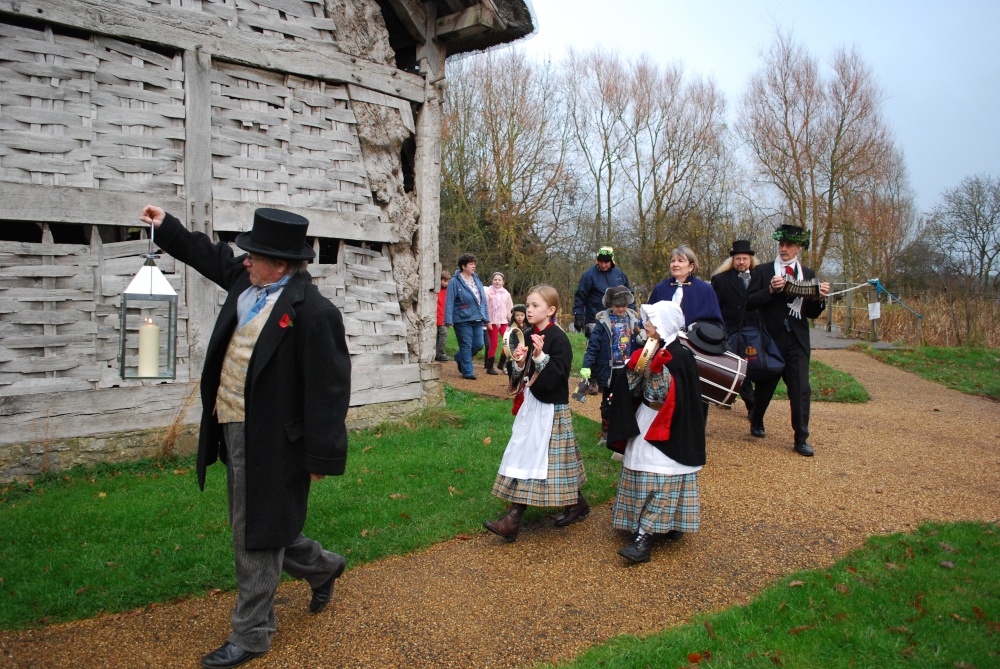
Christmas lantern parade - Image by PicturesOfEngland.com member Stephanie Jackson (view gallery)
It is often said that the Victorians invented Christmas, as it was during the Victorian period that many of today's traditions were introduced, starting in 1848 when the world's first illustrated news magazine "the Illustrated London News" published a drawing of Queen Victoria and the royal family celebrating Christmas around a decorated Christmas tree, after her German-born husband Prince Albert had brought one over from his homeland Germany, where it was already tradition. Soon after the drawing was published every home throughout Britain had a Christmas tree decorated in candles, home-made decorations, small gifts and sweets, and it has been a popular tradition ever since.
ID#7108
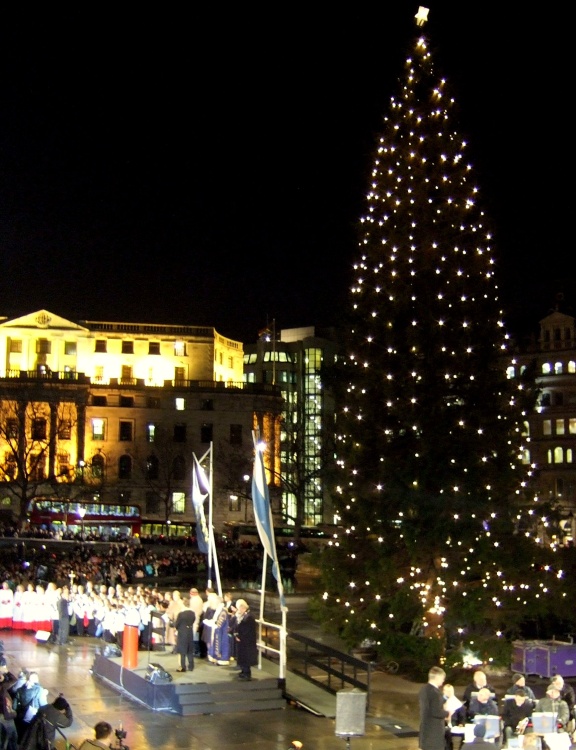
A picture of Trafalgar Square - Image by PicturesOfEngland.com member Dave Latham (view gallery)
The beautiful Christmas tree adorning London's Trafalgar Square each year is a gift given to Britain from the country of Norway as a thank you to Britain for its support during the Second World War. The first tree was cut down in 1942 by Mons Urangsvag during a raid on the Norwegian island of Hisoy. The tree was then transported to England where the Norwegian King was in exile, and the tree was given to him as a gift. There is a large ceremony in Trafalgar Square each year, when the lights are turned on. The ceremony is on the first Thursday of December and attended by thousands of people, and led by the Lord Mayor of Westminster, with a choir and traditional brass band. The stump from the original 1942 tree is still on the Norwegian island today, and has since sprouted a new tree.
ID#10420
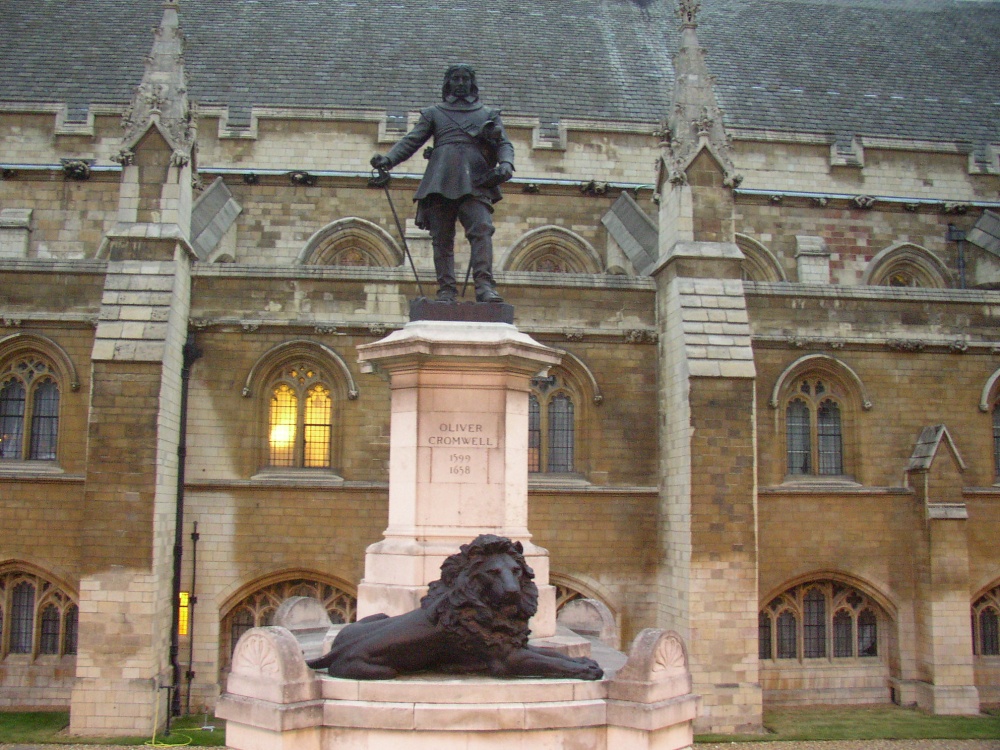
Statue of Oliver Cromwell, London - Image by PicturesOfEngland.com member Franklin Graham (view gallery)
In 1647 the Puritan government, led by Oliver Cromwell, put a ban on Christmas as they believed it to be an excuse for drunkenness, and other unsavoury behaviour, seeing it as a pagan festival as it was not a named day in the bible. They banned all Christmas activities inculding dancing and the singing of carols, cheerful celebration, gambling and drinking. Soldiers even patrolled the streets of London, ordered to seize any food prepared for Christmas celebrations. This ban on Christmas proved extremely unpopular, and pro-Christmas riots broke out across the country, with some of the worst being in Canterbury on the first Christmas of the ban. The ban lasted from 1647 when it was first imposed, until the restoration in 1660.
ID#54
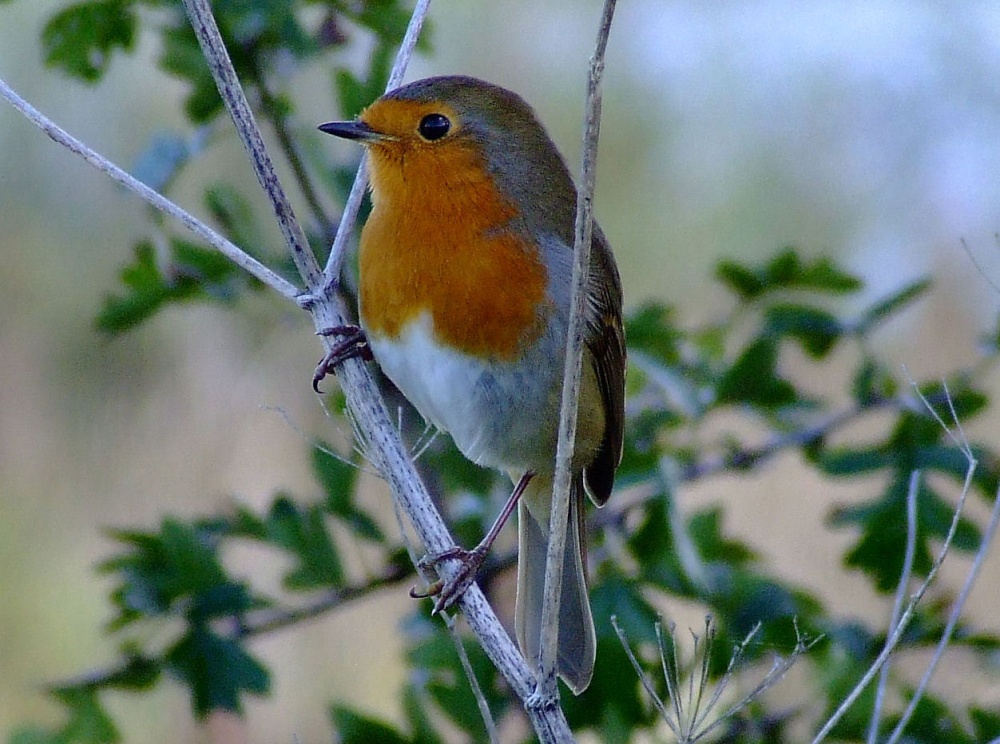
Robin....erithacus rubecula - Image by PicturesOfEngland.com member Andy Edwards (view gallery)
The robin is one of Britain's favourite garden birds and is also a symbol of winter and Christmas, with its picture printed on millions of Christmas cards that go out each year.
It is believed that this association with Christmas first came about during Victorian times in England when the newly created postal service dressed their staff in red uniform, which soon earned the postmen the nickname of "Robins", so at Christmas time people would be waiting for the local "robin" to bring them cards and letters from loved ones, and so the association began and the beautiful little red-breasted bird soon found its way onto our Christmas cards, wrapping paper and other Christmassy things.
ID#10817
| Article Title | Author | Date |
| Stonehenge | David Coe | 23rd January 2024 |
| Derwent Dam: A Historic Icon in the Heart of Derbyshire | David Coe | 14th January 2024 |
| The Native Trees of England: A Botanical Tapestry | David Coe | 15th December 2023 |
| Stoke-on-Trent: The Potteries Hub | David Coe | 12th December 2023 |
| England's 'Heritage at Risk Register' 2023 | David Coe | 11th December 2023 |
| 10 of the prettiest villages in the Lake District, Cumbria | poe | 16th March 2023 |
| Where to see Daffodil Displays in the South West of England | poe | 3rd March 2023 |
| 10 Famous Landmarks in Dorset | poe | 1st March 2023 |
| List of popular Dorset market towns including market day | poe | 1st March 2023 |
| 10 Best Historic Attractions to visit in York, England | poe | 16th May 2022 |